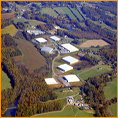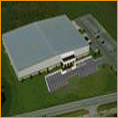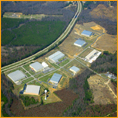A TIF program uses increased, future real estate tax revenues to fund new improvements designed to attract additional industrial investment and job creation.
The recession of 2008 paired with increased energy code requirements (IECC Regulations) and tightening environmental regulations created a perfect storm hitting industrial development. Typically, industrial developers build “speculative” buildings in anticipation of future tenant demand. These buildings are a financial risk to the developer, but a benefit to the local community as it allows for quick occupancy to potential manufacturing and distribution companies.
As the recession hit, manufacturers became cautious with expansion plans. In the same time period, the federal government increased energy and environmental regulations driving up construction costs 15%-18% and essentially erasing the potential profit for speculative builders. The market of potential manufacturing or distribution users were not willing to pay the additional costs; and, as a result, very little speculative industrial space was being built.
This widening gap for new industrial space rent versus used industrial space rent resulted in a continuing reduction in the supply of existing industrial space. Ready industrial space for manufacturing, distribution, and warehousing is a critical element needed by expanding businesses. Manufacturers need to capitalize on market opportunities in months not years; so, if ready industrial space is not available, then businesses cannot capture the opportunity and fail to grow.
To stimulate the expansion of speculative industrial space, and in turn industrial employment growth, governments can turn to incentive plans to offset rising costs. While this may seem short sighted to some from a tax standpoint, the reality is quite the opposite. Communities with immediately available industrial space have a much higher opportunity to attract new prospects, nor is it risky for the community granting the TIF. The TIF loan is paid back by the increase in property taxes and is guaranteed by the developer receiving the TIF.
The community leaders of Anderson County, TN saw the opportunity to restart speculative industrial development in their community with a TIF. Working with The Hollingsworth Companies, the Anderson County Commissioners and Industrial Development Board of Anderson County have approved a TIF for two industrial buildings and site infrastructure to be developed by The Hollingsworth Companies.
“This TIF will result in 2 speculative industrial structures of 126,000 SF each that include 13,100 SF of commercial office space”, said Bear Stephenson, Chairman of the Anderson County Industrial Board. “It is anticipated these buildings will attract automotive, plastics, nonwovens, and various other manufacturing and distribution companies and the resulting jobs to Anderson County.”
The Hollingsworth Companies’ In-house Attorney (Jamie Huskins) and SVP of Architecture and Business Development (Tom Wortham) worked with the county commissioners and industrial development board to develop the documentation and gain approval for the Tax Incentive Funding.



